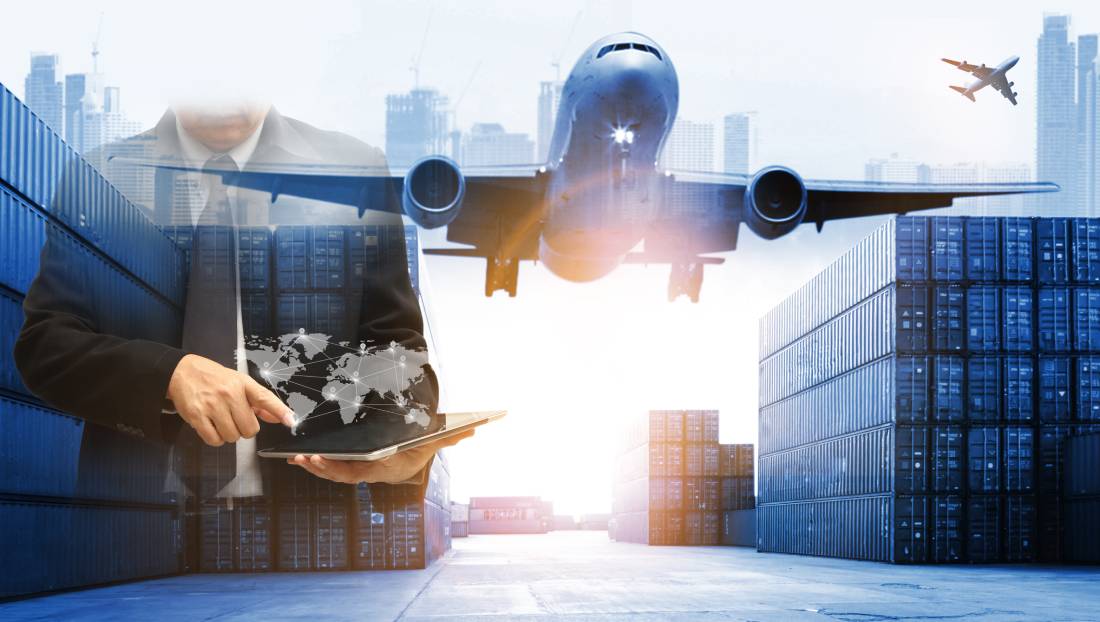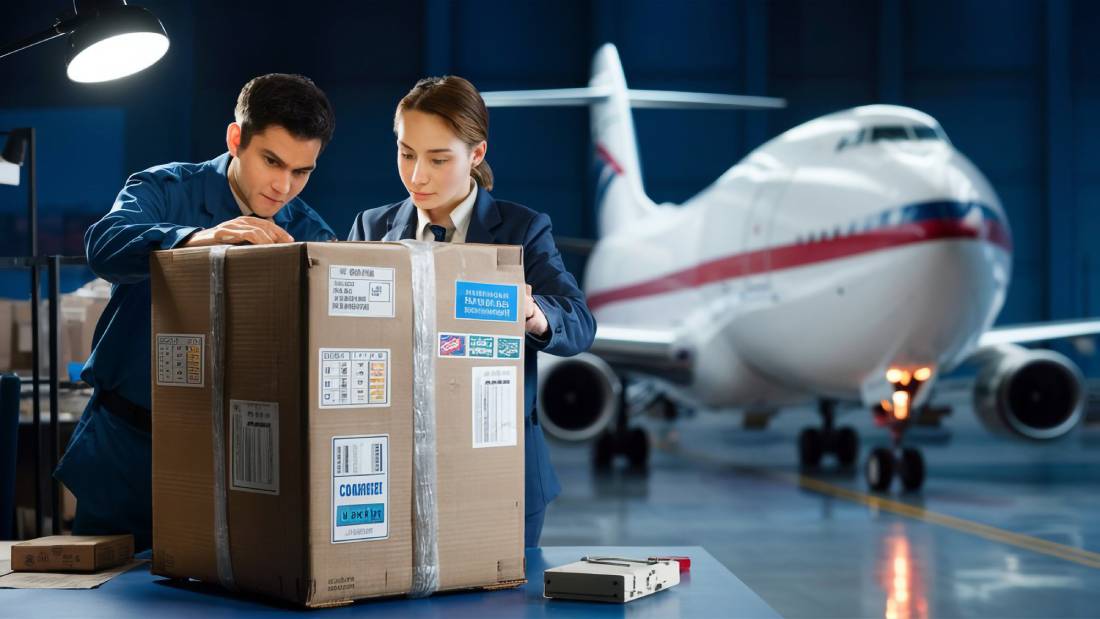Integrating Technology into Air Freight Services: Trends and Innovations
The transport and logistics sector has significantly changed over the past ten years, and air freight services are no exception. As the backbone of international trade, air freight has a critical role in facilitating the speedy transfer of goods from one border to another. Along with the changing expectations of the consumer, technological advancements, and efficiency demands, cutting-edge technology has been the cornerstone of modern air freight operations.
This blog discusses the latest trends and innovations shaping the future of air freight transport services, highlighting how technology is driving efficiency, sustainability, and growth in the industry.

The Evolution of Air Freight Services
Air freight has always been associated with speed, reliability, and convenience. Although these qualities are still inextricably linked, the logistics landscape is changing at an incredible rate. The pressure to improve is compounded by e-commerce, globalisation, and shifts in consumer behaviour.
Old practices like paper documentation, traditional tracking systems, and limited data exchange are gradually being replaced with intelligent, tech-savvy alternatives. From AI to blockchain and IoT, emerging technologies are rewriting the rule book for efficiency and scope in air cargo operations.
Key Trends for Technology Integration into Air Freight Services
1. AI-driven optimisation
Artificial intelligence is the game-changer for the logistics and transportation sectors. In air freight, AI is used to optimise every aspect of operations, from route planning to inventory management. AI can predict trends, identify bottlenecks, and recommend more efficient processes by analysing large datasets.
For example, algorithms can predict the exact load distribution for the cargo, minimise fuel consumption, and thus minimise costs. AI-powered chatbots are changing customer service by instantly replying to all queries, tracking shipments, and solving problems immediately.
2. Blockchain for transparent documentation
Air freight documentation is lengthy and often burdensome. Record keeping through the conventional method is subject to error, inefficiency, and fraudulent practices. It is here that blockchain technology can be used to overcome these difficulties.
Through its decentralised and tamper-proof ledger, it provides an opportunity for easy and secure document sharing, such as invoices, customs clearances, and transport details. This is transparent and will reduce the likelihood of disputes and quicken the pace of movement across borders.
For instance, in blockchain-enabled platforms, all supply chain stakeholders would have access to the same information, eliminating delays due to documentation discrepancies.
3.IoT for Real-Time Monitoring
IoT is revolutionising air freight because it enables tracking and monitoring shipments in real-time. The details of the shipment, such as location, temperature, humidity, and condition of cargo, can be provided using IoT devices such as smart sensors and GPS trackers.
One of the main advantages of this technology is that it proves useful, especially in pharmaceutical and food-related industries where a specific environment needs to be kept intact. If any of its parameters deviate from the required standard with IoT, managers will immediately receive an alert for corrective action.
IoT integration brings more transparency because customers can have real-time shipment updates. Improved visibility builds trust and strengthens relationships between businesses and clients.
4. Automation and Robotic Solutions
Automation is a necessity in this air freight space, not a want. From a fully automated warehousing facility right down to handling cargo through autonomous systems, everything is becoming ‘automated’ enough to minimise labour intervention.
Humans are being utilised for loading-unloading cargo work, sorting shipments, and carrying out inventory management at the warehouses among other tasks now. The results are improved efficacy and minimal dangers of human flaws and workplace catastrophes with these technologies.
These automation systems are the most useful in peak demand situations, like the holiday season. The volume of shipments increases manifolds during such a period. So, speeding up operations, goods are delivered at the right time even under conditions of high pressure.
5. Digital Platforms for End-to-End Visibility
Modern services rely on digital platforms to provide end-to-end visibility of shipments. The digital platforms integrate data from different sources, such as IoT devices, airlines, and logistics providers, to create a unified dashboard.
This level of visibility allows businesses to track shipments at every stage of their journey, from pickup to final delivery. Advanced analytics tools enable companies to identify trends, monitor performance, and make data-driven decisions to enhance their supply chain.
6. Sustainable Practices with Green Technology
As sustainability remains an important agenda for all the sectors, air freight operators are becoming environmentally friendly and reducing their adverse impacts on the environment. Innovation through electric cargo planes, fuel-saving engines, and carbon offsetting are some ways in which sustainability for air cargo is being approached.
For instance, airlines are experimenting with biofuels and hybrid propulsion systems to lower emissions. Meanwhile, digital tools are being used to optimise flight routes and reduce unnecessary fuel consumption. By integrating these technologies, air freight companies can meet their environmental goals while maintaining operational efficiency.

How Technology Benefits
The integration of technology offers numerous benefits:
Enhanced Efficiency: Automation, AI, and IoT reduce operational inefficiencies, saving time and costs.
Increased Transparency: The digital and blockchain-based platform guarantees real-time accuracy and transparency in documentation.
Customer Experience: State-of-the-art tracking and monitoring systems provide real-time information to the customers, creating trust and satisfaction.
Environmental Sustainability: Green technologies and optimised operations ensure a lesser carbon footprint.
Scalability: Tech-based solutions allow air freight providers to scale up their services based on changing demands.
The Indian Context: International Air Cargo Services in India
India has the fastest air freight growth due to an explosive economy and an increase in e-commerce and international trade. International air freight services have a very short history, but with technological advancements, they rapidly follow the pace of the global benchmark.
From implementing AI-based logistics platforms to utilising IoT to track shipments, Indian air freight service providers have welcomed innovation in this area. Government policies, like the creation of “Digital Sky” as a platform for drone operations, demonstrate that modernising its air freight industry remains on the radar for India.
India’s unique geographic and economic difficulties also necessitate the integration of technology. With such vast and diversified geographies, effective planning and timely execution of the delivery process ensure that cargo moves in and out of the country on time. Digital tools allow Indian air cargo companies to move past these limitations and provide better services to customers and businesses worldwide.
Obstacles to Implementing Technology
While the benefits of technology are undeniable, integrating these innovations into air freight operations comes with its own set of challenges:
High Initial Costs: Implementing advanced technologies such as IoT and blockchain requires significant investment, which may be a barrier for smaller players.
Data Security: As digital platforms become more prevalent, ensuring the security of sensitive data is a growing concern.
Workforce Adaptation: Training employees to use new technologies effectively is critical but often overlooked.
Infrastructure Gaps: In some regions, especially in developing countries, the lack of adequate infrastructure can hinder the adoption of advanced technologies.
The above challenges require a multi-stakeholder approach involving industry stakeholders, governments, and technology providers.
Conclusion
The future of air freight is firmly rooted in technology, driving the industry toward greater efficiency, transparency, and sustainability. Companies that adapt to these advancements won’t just stay competitive—they’ll redefine the benchmarks for air freight operations.
Innovations such as AI, IoT, blockchain, and green technologies offer transformative potential. By embracing these tools, air freight providers can streamline operations, uncover new opportunities, and deliver exceptional value to their customers.
In today’s world, where speed, precision, and sustainability are critical, technology isn’t optional—it’s essential. The modernization of air freight services is well underway, shaping a more efficient and sustainable future for global logistics.